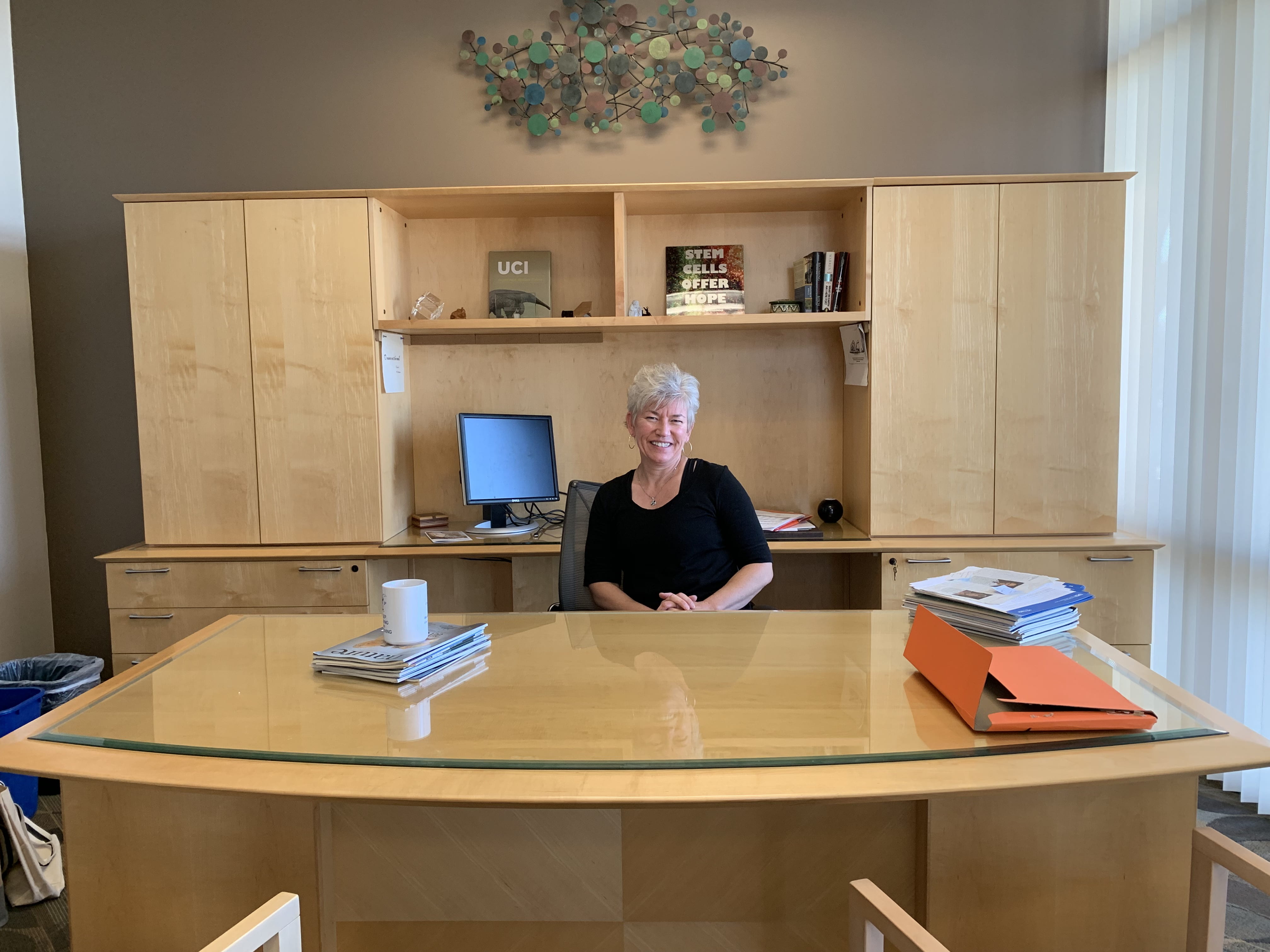Campus labs making sample-preserving fluid for COVID-19 test kits
‘Mini task force’ of UCI researchers responds to urgent need at medical center

Widespread testing, even of those not showing symptoms, is one of the most effective ways to track the prevalence of coronavirus infections in communities.
The broad-based assays currently being ramped up by many hospitals and health systems around the country require a steady stream of single-use supplies. In addition to the familiar nasal/laryngeal swabs needed to collect samples, the much-sought-after test kits include vials of a liquid called “viral transport medium” that fixes and preserves those samples for later analysis in a lab.
UCI Health has recently experienced increased demand for VTM, as medical staff recently have been conducting about 300 COVID-19 tests per day. Each test kit vial contains 2 milliliters of the fluid, so the system’s current daily requirement is approximately 600 milliliters.
Logistics officials at UCI Medical Center in Orange realized that they had only two weeks before exhausting their inventory, so they asked UCI’s Emergency Operations Center – which has been integrally involved in many aspects of the campus’s response to the coronavirus crisis – about a solution.
Randall Styner, emergency management director and EOC coordinator, shared the request recently on one of his group’s regularly scheduled video conferences, and participants sprang into action. A follow-up call was scheduled between the UCI Office of Research and medical center staff to ascertain whether VTM could be synthesized in campus labs and, if so, which labs could be utilized; if the necessary chemicals and reagents were on hand; and how much of the liquid was required.
“Right then and there, we determined that it would be possible to do this,” Styner says. “VTM is basically a preservative made of materials that are common in lab settings, and it’s used all over campus.”
He reached out to Bruce Morgan, associate vice chancellor for research administration, to see if his organization would approve of making VTM in UCI labs and for help in soliciting faculty expertise. The request went up to Pramod Khargonekar, vice chancellor for research, who quickly gave the green light.
“All indicators were pointing to this thing shooting down the rails like a rocket,” Styner says. “As soon as the word got out, people started getting a plan together.”
Among the first to be contacted was the Department of Chemistry, since its faculty have unrivaled experience in mixing chemicals. Gregory Weiss, a professor in the department, sent a message asking colleagues in the School of Physical Sciences, the School of Biological Sciences and the School of Medicine to locate materials. They did so within hours.
“The request from the vice chancellor for research was pretty extraordinary, and everybody dropped everything to respond,” Weiss says.
The VTM synthesis project ultimately moved to the School of Medicine because its faculty have extensive expertise in required cell culture procedures.
“We set up a mini task force of related medical investigators and faculty from various schools,” says Aileen Anderson, professor of physical medicine & rehabilitation and director of the Sue & Bill Gross Stem Cell Research Center. “We sourced all the reagents needed for the media and set up a system to manage production in Gross Hall with social distancing measures in place to protect our staff.”
Styner says that many of the components of VTM are readily available at UCI and that teams here will create it under Centers for Disease Control and Prevention guidelines. The fluid is a mixture of saline, disinfectant, and such exotic ingredients as fetal bovine serum and sheep blood agar. Other necessary reagents were obtained from a supplier in Orange County.
Labs on campus should be able to generate more than enough VTM for COVID-19 testing through UCI Health, Styner says, and UCI will make the solution available to other healthcare providers in the region who need it. Anderson says UCI will produce enough VTM for 16,000 test kits over the next four to six weeks, with the first of it reaching the medical center by April 10.
“We’re happy to lend our support in any way we can,” she says. “Our people are wildly enthusiastic about doing something to help those in need.”
Khargonekar says the project is a great example of what the campus research community can do to help the medical center in this crisis, adding, “I’m very inspired by the tremendous energy and speed with which people are rising to the challenges.”


